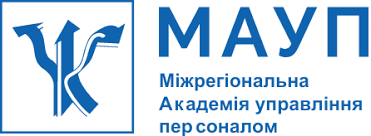CORRECTION OF THE ENERGY COMPONENT IN THE COMPLEX TREATMENT OF PATIENTS WITH UNSTABLE ANGINA AND ARTERIAL HYPERTENSION
DOI:
https://doi.org/10.32689/2663-0672-2025-1-11Keywords:
unstable angina, complex treatment, cardiovascular pool, energy component, modified exercisesAbstract
For the management of unstable angina (UA) patients, it is important to consider not only traditional comprehensive drug treatment, but the use of techniques to activate the energy resource of the cardiovascular system and the whole organism. Modern protocols for the management of patients with UA do not take into account the correction of the energy component. The latter opens up new opportunities for both treatment and rehabilitation of this group of patients. Aim: to study the impact of the correction of the energy component on the clinical course of UA in the complex treatment of patients with UA and hypertension. Methodology: 113 patients with UA and concomitant hypertension of stage II, 2-3 degrees, aged 63.8±8.4 years (41 men and 72 women), were examined. Patients were divided into 4 groups: main group I (MG I) (n=22) – adults 55.7±5.2 years old, main group II (MG II) (n=44) – elderly 68.7±4.7 years old, control group I (CG I) (n=20) – adults 54.3±4.3 years old, control group II (CG II) (n=27) – elderly 69.2±4.8 years old. All patients underwent electrocardiogram (ECG), echocardiography, measurement of blood pressure (BP), respiratory rate (RR), and chest X-ray. The diagnosis of UA and AH was established according to recommendations. All patients received drug therapy according to the protocols, patients of MG I and MG II additionally performed selected modified gymnastics exercises during period of hospitalisation. Changes in the patient's condition were recorded by surveying complaints, monitoring ECG, BP, and RR after 10 and 20 days of treatment. Results: Among patients of MG I, on the 10th day of therapy, complete remission of pain in the heart area was achieved in 11 people (55%), which allowed to cancel painkillers (for comparison, in CG 1 – 7 people (35%), p = 0.024); and in 45% of cases – to reduce their dosage by half, and after another 10 days – there was no need to take antianginal drugs. Complete remission of pain syndrome in group MG 1 was achieved for a period of 6 months. In MG 2, after 14 days, the dose of antianginal drugs was halved, and on the 20th day, the dose of ACE inhibitors and beta-blockers was halved, nitrates were discontinued in 33 patients (75%). There was no possibility to adjust the dose in the direction of its reduction or to discontinue drugs of the nitrate, ACE inhibitors, beta-blockers group in CG2. Complete remission of pain syndrome in MG2 was recorded on the 37th (33-41st) day of therapy (on the 5th week of therapy). Conclusions: for patients with UA and concomitant hypertension of stage II of 2-3 degrees, it is advisable to use selective modified exercises in complex treatment both for correction of the energy component in the areas of metameric innervation of the cardiovascular basin, and for stimulation of the general energy resource.
References
Арєшина Ю. Б. Методи рухової активності при рецидивуючому бронхіті у дітей дошкільного та молодшого шкільного віку. Науковий часопис НПУ імені М.П. Драгоманова. 2017. Вип. 5 К. № 86. С. 10–14.
Діагностика ішемічних уражень серця при нейрометамерній патології. Реєстр галуз. нововвед. № 322/31/09/ С.В. Трунова, Т.Д. Никула, В.Ю. Кундін. 2009. Вип. реєстр №30-31. С. 198.
Лікування ішемічних уражень серця, поєднаних із симптоматичною артеріальною гіпертензією при шийно-грудному остеохондрозі. Реєстр галуз. нововвед № 323/31/09 / С.В. Трунова, Т.Д. Никула. 2009. Вип. реєстр №30-31. С. 198–199.
Найпоширеніші серцево-судинні захворювання: як розпізнати і запобігти. Центр громадського здоров’я МОЗ України : веб-сайт. URL: https://phc.org.ua/news/nayposhirenishi-sercevo-sudinni-zakhvoryuvannya-yak-rozpiznati-tazapobigti (дата звернення: 17.10.2024).
Спосіб діагностики ішемічних уражень серця при нейрометамерній патології : пат. 43076 Україна : А 61 В 5/00 / С.В. Трунова, Т.Д. Никула, В.Ю. Кундін. № u200904574 ; заявл. 08.05.09 ; опубл. 27.07.09, Бюл. №14.
Спосіб лікування ішемічних уражень серця, поєднаних із симптоматичною артеріальною гіпертензією при шийно-грудному остеохондрозі : пат. 43814 Україна : А 61 Н 39/00 / С.В. Трунова, Т.Д. Никула. № u200905672 ; заявл. 03.06.09 ; опубл. 25.08.09, Бюл. №16.
Трунова С. В., Никула Т. Д. Оптимізація діагностики ішемічних уражень міокарда у хворих на хронічні вісцеропатії з артеріальною гіпертензією в поєднанні з нейрометамерною патологією. Науковий вісник національного мед. університету ім. О. О. Богомольця. 2009. Спецвип. № 25. C. 296–303.
Трунова С. В., Никула Т. Д. Особливості кардіалгії у хворих з шийно-грудним остеохондрозом і природженою дисплазією хребта. Українська науково-практична конференція : праці конференції, присвяченої 125-річчю від дня народження М.Д. Стражеско, м. Київ, 24-26 вересня 2001 р. Київ, 2001. С. 102.
Трунова С. В., Тиравська Ю. В., Бондарчук О. М. Доцільність корекції енергетичної складової в комплексному лікуванні хворих з нестабільною стенокардією. Актуальні проблеми громадського здоров’я : матеріали ХІ міжнародної науково-практичної конференції «Освіта і здоров’я», м. Суми, 15-16 квітня 2021 р. Суми, 2021. С. 96-99. / ред. М.О. Лянной. Т.1 (5). С. 96–99.
Цзижень М. А. Цигун. Історія, теорія, практика / пер. з англ. Богачихін М.М. Київ : Молодь, 2004. С. 208.
Byrne R. A., Rosello X., Coughlan J. J., et al. 2023 ESC guidelines for the management of acute coronary syndromes. European heart journal. 2023. Vol. 44. № 38. Р. 3720–3826. DOI https://doi.org/10.1093/eurheartj/ehad191
Martin D. A., Hook J., Kim S. W., et al. Mind-body therapy for cardiometabolic risk in U.S. middle-aged Black adults: a scoping review. Frontiers in public health. 2025. Vol. 13. https://doi.org/10.3389/fpubh.2025.1480369
Ryan C.T., Patel V., Rosengart T. K., et al. Clinical potential of angiogenic therapy and cellular reprogramming. JTCVS open. 2021. Vol. 6. P. 108–115. https://doi.org/10.1016/j.xjon.2020.12.023
Sibilia J., Berna F., Bloch J.G., et al. Mind-body practices in chronic inflammatory arthritis. Joint bone spine. 2024. Vol. 93. № 3. https://doi.org/10. 1016/j.jbspin.2023.105645
Steen J. P., Kannan V., Zaidi A., et al. Mind-body therapy for treating fibromyalgia: a systematic review. Pain medicine (Malden, Mass.). 2024. Vol. 25. № 12. P. 703–737. DOI: https://doi.org/10.1093/pm/pnae076










